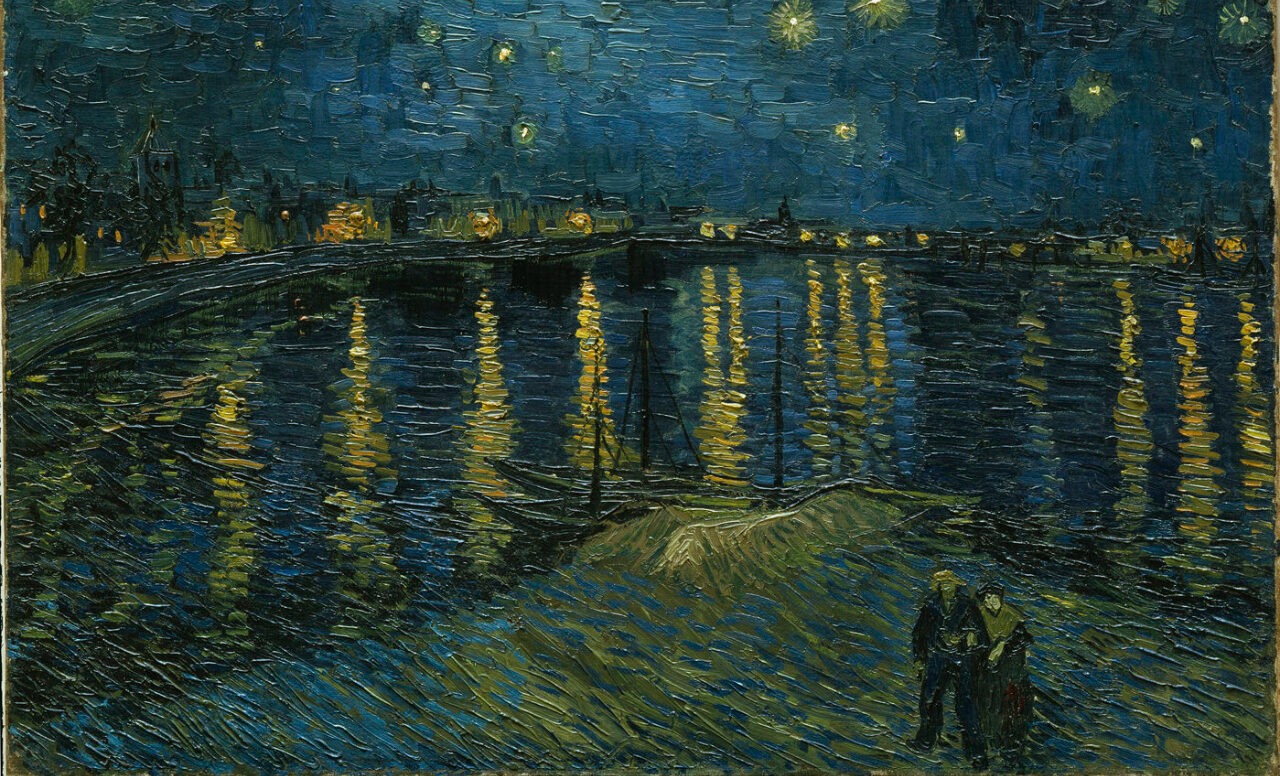Van Gogh: Poets and Lovers at the National Gallery

This year sees the much-heralded bicentenary of the National Gallery, and director Gabriele Finaldi and his team have chosen to hold a suitably public-friendly exhibition to mark the momentous milestone. Back in the 1870s, the youthful Vincent Van Gogh had a stint as an art dealer for the London branch of Goupil & Co, then based on Southampton Row. That formative period in the Dutchman’s life was examined by Tate Britain in 2019. Instead, the National Gallery’s current show focuses on the final, career-defining, frenzied two years of Van Gogh’s short life ended by his own hand. The institution is also celebrating another landmark, with 2024 being a century since their purchase of one of the Dutch master’s celebrated Sun Flowers.
On display are 61 works from museums and private collections from all over the globe. At first, it would seem a well-charted path with Vincent relocating to Arles in the South of France, dually bent on establishing a utopian art colony and invigorating his own work. One also finds him here staying in the hospital at Saint-Rémy in Provence during his recovery from his bouts of mental breakdown.
The turbulence of Van Gogh’s life and his reputation as a tortured genius have become deeply entrenched in the general consciousness by Hollywood’s Lost for Life (1956), starring Kirk Douglas and the more recent animated Loving Vincent (2017). The National Gallery are making a fresh argument, challenging the well-worn narrative of the tragic artist and projecting the Dutchman as a rule book-ripping modernist. Visitors are encouraged to focus purely on the art, with curators taking the unusual step of solely providing titles and dates of creation. Further information has to be sought from an accompanying booklet.
Perhaps surprisingly, Poets and Lovers, constitutes the National’s first large show to be devoted exclusively to Van Gogh. The title of the exhibition encapsulates the array of characters conjured up by the Dutchman in his work. In the opening room, one comes across “the lover”, an army officer known to the artist in Arles, Paul-Eugène Milliet. His face rendered in blue-green tints, the local heartbreaker wears a smart red military cap set against a brilliant green background, a golden moon shining above. Another portrait displayed nearby, named the poet (1888) portrays a considerably less forthright-looking character. The gaunt features of the Belgian painter Eugène Milliet meet our gaze before a starry sky. These two portraits are separated by The Poet’s Garden, a park across the road from the Yellow House where Van Gogh famously resided for a period in Arles. The artist dubbed the location with the name, imagining it could have been inspirational for Renaissance poets.
Five years in the making, this firecracker of a show boasts impressive loans secured from private ownership and institutions from around the world. One of the artist’s seven sunflower paintings, from 1889 generously sent by the Philadelphia Museum of Art, has been reunited with the National Gallery’s old version for the first time in over a century. The two are joined, as Van Gogh expressly intended, by a portrait of a mother figure, La Berceuse (The Lullaby, 1889), loaned by the Museum of Fine Arts, Boston.
Elsewhere one finds his painting of his chair, from 1888, a symbolic self-portrait with his pipe and tobacco lying on top. Equally well-known is his affectionate depiction of his Yellow house bedroom from the following year with its sturdy bed and floorboards flecked in green brush strokes. Van Gogh continues to break with the mould in The Sower, which testifies to the influence of Japanese prints on his practice; silhouetted or maybe hallowed by an immense sun behind him, the eponymous figure toils away alongside mauve fields of lavender as a lone tree thrusts up on a strong diagonal to the left. Reality is heightened.
A Portrait of a Peasant (1888) is a particular revelation. Van Gogh’s painting of an old gardener, Patience Escalier, sees him striving to transform his features into a rural archetype by means of exaggerated colours, deploying orange and gold tones redolent of harvest. Starry Night over the Rhône (1888), is dreamy and otherworldly as a couple of lovers out for a romantic stroll are set before a night sky lit up by fantastically bright stars while dazzling reflections streak the water with gold. We again find Van Gogh transforming reality into a vision all of his own with complementary colours being used to imply the couple’s harmonious relationship.
Throughout this exhibition, one finds the Dutchman contemplating nature with an immediacy all of his own. Trees in the Garden of the Asylum (1889), painted during his confinement in the psychiatric hospital in Saint-Rémy, reveals him framing the composition with twisted tree trunks. It once again highlights the inspiration he found in Japanese prints. The landscape around Saint-Rémy, rich in olive groves and the rugged Alpilles mountain range, evidently provided Van Gogh with a wealth of opportunities to create works in series. He can be seen producing variations of existing works, exploring new expressive possibilities and often pitting himself against contemporaries such as Gaugin and Bernard. At times he is on the verge of abstraction. By this period, much of Vincent’s work is filled with movement. The trees in Olive Grove, Saint-Remy (1889) appear to dance before a glowing sky as a swirling, wave-like mass of ploughed earth is streaked in electric blue shadows extending from the trunks. Some of the same muscular, vital rendering of form characterises the remarkable Montmajour drawings displayed here from the previous year.
In that incredible period between February 1888 and May 1890, Vincent Van Gogh completed around 200 paintings in Arles and 150 in Saint-Rémy. He had predicted in a letter to his brother Theo soon after arriving in Arles in 1888 (and quoted on the wall here) that: “The future of the future is a colourist such as there hasn’t been before.” It’s a declaration of artistic intent Vincent wholeheartedly embraced. Brimming with vitality, often intoxicating in its raw energy and power, one finds a true great here in his absolute pomp. The curatorial team at the National Gallery deserve credit for focusing on the thoughts that triggered his creative journey as a modern artist with a radical vision rather than his personal life and struggles. Such is the notoriety of Van Gogh’s battles with his mental health that it proves a challenge to distance oneself from what was happening behind the canvas. Nevertheless, this fresh curatorial approach manages to bring to the fore Vincent Van Gogh as a hugely innovative, original artist of soaring ambition.
James White
Image: Patrice Schmidt
Van Gogh: Poets and Lovers is at the National Gallery from 14th September 2024 until 19th January 2025. For further information or to book visit the exhibition’s website here.

























Facebook
Twitter
Instagram
YouTube
RSS